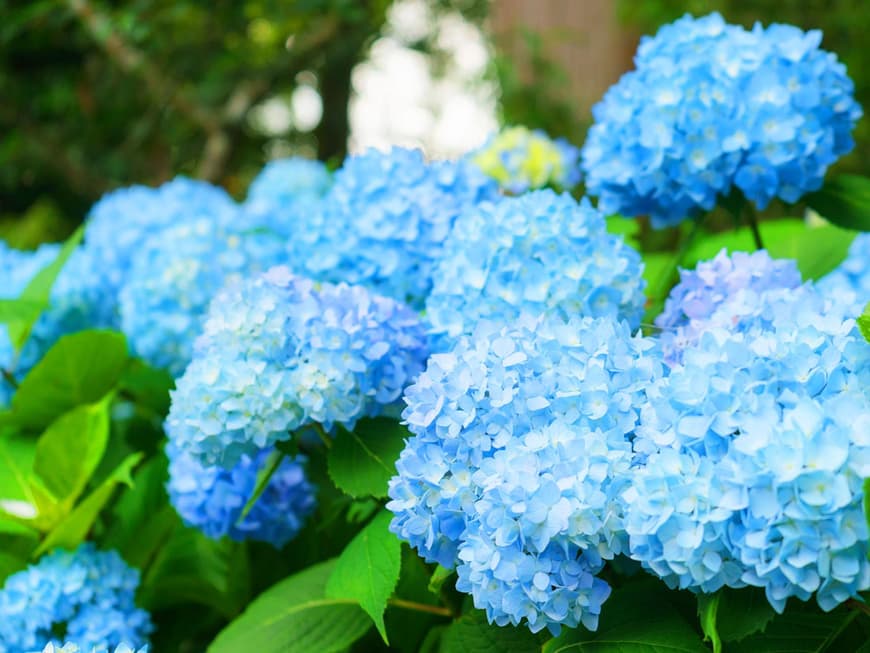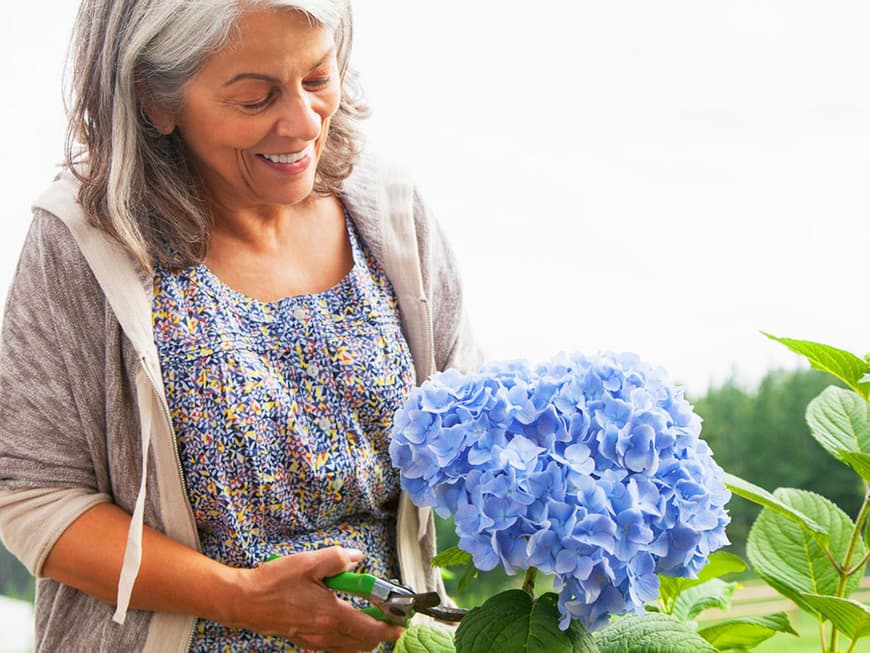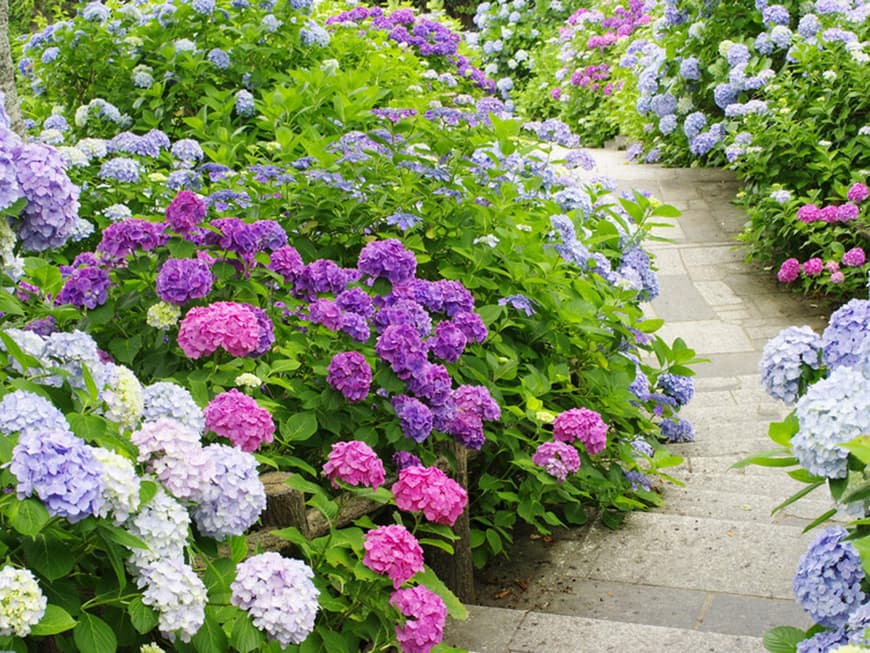Amazing: blue hydrangeas don't actually exist
First they were blue, then pink: have you ever wondered why hydrangeas change color? It's quite simple: there are no blue hydrangeas by nature! Instead, the composition of the soil is solely responsible for the color formation.
Only an "acidic" soil with a pH value of 4.0 to 4.5 and the presence of aluminum leads to the blue flowers. However, the potting soil in many gardens is neutral or alkaline - this can be checked with test strips from a pharmacy or specialist shop.
How to prevent the color change
If you want to preserve the blue flowers, you can enrich your hydrangeas with special fertilizer from a specialist shop and fill the planting hole with rhododendron soil: Rhododendrons need the same type of soil as hydrangeas in order to thrive. It is important that the fertilizer contains little phosphorus and a lot of potassium. Do not use fertilizers that make the soil alkaline, such as bone meal. In addition to fertilizer and soil for rhododendrons, you can also use products for azaleas and camellias.
Tip: Organic substances also increase the acidity of the soil. Coffee grounds (only use when cool!) and cut grass, but also kitchen waste such as fruit and vegetables, are particularly suitable.



